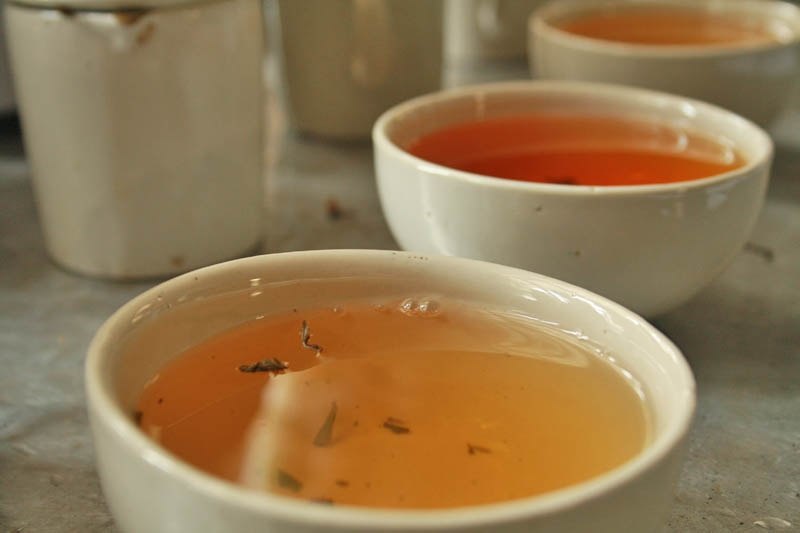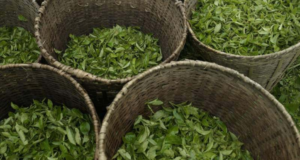Darjeeling Tea – Champagne of Teas

Darjeeling is a district in West Bengal, India which is famous for its tea. Darjeeling tea is considered the champagne of teas mainly because of its distinctive aroma it’s the finest teas in the world.
The word ‘Champagne‘ signifies sparkling wines that come from the Champagne region of France, in the world of tea the word ‘Darjeeling’ denotes tea from the district of Darjeeling located high in the foothills of the Indian Himalayas.
Among the three tea producing regions in India, Darjeeling, Assam, and Nilgiri (Ooty), Darjeeling is in the highest altitude producing very fine tea. Darjeeling tea is more delicate and aromatic. It’s known for its muscatel fragrance which is probably quite unique.
Due to the unique and complex combination of agro-climatic conditions Darjeeling tea has a distinctive and naturally occurring quality and flavor which has won the patronage and recognition of discerning consumers all over the world for well over a century.
History
Darjeeling, the land from where the eponymous tea, famously described as the champagne of teas comes, is situated in the foothills of the Himalayas, located in the state of West Bengal, India. Ranging from 100-4200 meters in this mountainous region borders Nepal, Bhutan, and Tibet.
Due to its cool weather and topography, Darjeeling seemed the ideal place to experiment with tea cultivation. In 1841 Dr. Campbell, Superintendent of the District planted tea bushes that had been cultivated from seeds brought by Fortune from China. The results were so good that just six years later the first tea nursery, the plants from which were used to set up the first tea garden.
By 1866 Darjeeling already had 39 tea plantations of 1000 acres producing 133,000 lbs of tea. The growth was rapid. In the next ten years, the number of gardens tripled, the acreage increased by 80 percent, while production increased tenfold.
The cool, damp climate, constant mist, and the high elevation of Darjeeling (which has an impact on the sunlight) combined to produce a flavor profile typical of Darjeeling. Before the British reached this remote and secluded part of the country, Darjeeling was inhabited by animist tribes of Tibeto-Burmese stock who practiced slash and burn cultivation.
The arbitration ended in an expected manner – the British took possession of Darjeeling in 1835. They turned the place into a premier hill station where their officials along with their families could retire during summer months to escape the brutal heat of the plains. After the British left India in 1947, the ownership of the tea gardens was transferred to Indian entrepreneurs.
During the early years of the communist rule, trade unions and garden management often clashed which caused serious problems in many of the tea gardens, many of them shutting down
In the mid-80s Darjeeling experienced another kind of political trouble that paralyzed the industry. Century-old demand for political separation from West Bengal reared its head again in Darjeeling, and for the first time, the hills were engulfed in an armed political movement.
Presently Darjeeling has 87 gardens, spread over 17,500 hectares. It employs over 52,000 people of which 60 percent are women. The region’s economy is heavily dependent on the tea.
Health Benefits of Darjeeling tea
Darjeeling tea, like all other teas, possess beneficial catechins and flavonoids that make up the antioxidants in tea. Black, oolong, green and white teas all possess powerful antioxidants that offer protective and curative properties. All true teas, including Darjeeling, come from the plant camellia sinensis.
Darjeeling tea helps in
· Cancer prevention
· Dental health
· Obesity
· Gastric Ulcers
· Cardiovascular benefits
Types of Tea

Darjeeling tea is not only about the garden where it is produced. It’s true that due to the intense rivalry the gardens strive to create their own personalities when it comes to taste. But Darjeeling tea comes in different varieties or types, in each variety, there are unique flavors that depend on the season when the tea is harvested, and within each variety and flavor, there are grades that depend on the size of the tea leaves.
The modern Darjeeling style employs a hard wither (35-40% remaining leaf weight after withering), which in turn causes an incomplete oxidation for many of the best teas of this designation, which technically makes them a form of oolong. Many Darjeeling teas also appear to be a blend of teas oxidized to levels of green, oolong, and black.
Darjeeling white tea
The white variant of Darjeeling tea has a delicate aroma and brews to a pale golden color with a mellow taste and a hint of sweetness. Darjeeling white tea leaves are very fluffy and light; therefore, it is recommended to use more (by volume) when preparing it than one normally would for other teas
Darjeeling oolong
Darjeeling oolong is lighter than usual Darjeeling black tea during the first flush, as it is semi-oxidized. The cup looks light orange and infusion remains green. Darjeeling oolong in the second flush is more accepted worldwide.
Darjeeling Organic Green Tea
Darjeeling Tea is also becoming popular because of the Green Tea variant produced by several estates in Darjeeling. Green tea is not fermented at all. It is steamed to stop oxidation before it starts, which preserves most of the polyphenols. It has 60% more polyphenol (antioxidants) content than black tea and has a less bitter taste.
Chai Of India
Hallmark of excellence
Tea is grown at an altitude ranging from 600 to 7500 meters above mean sea level and requires a minimum of 50″ to 60″ of rainfall in a year and for this Darjeeling did not lack. The cool and moist climate, the soil, the rainfall, and the slopping terrains all combine to give Darjeeling tea its unique “Muscatel flavor” and “Exquisite Banquet“.
Darjeeling still manufactures the original methods of tea manufacture, known as the “Orthodox” tea manufacture, as against the “C.T.C.” type of manufacture adopted in the plains, now. (C.T.C. stands for Curling, Tearing & Crushing).
The Darjeeling logo is a hallmark of excellence. Launched in 1986, the Darjeeling logo has come to represent high-quality muscatel flavored tea with the unmistakable class that only Darjeeling can offer. The logo is a significant landmark in the history of the tea industry.
Suggested Read: Different Types of Tea






